Prompts are a teaching tool that we use in classrooms to increase the likelihood of our student responding correctly. They refer to subtle cues or directions that are provided to a child before or during an action or response in order to assist them at any given situation, event or learning process.
Following are the different types of prompts
1 Gestural Prompt
A gestural prompt refers to pointing, nodding or using any other gestures which will help the student understand what we are referring to.
Example: We ask the student, “Can you give me the yellow ball?” and then prompt him by pointing towards the yellow ball.
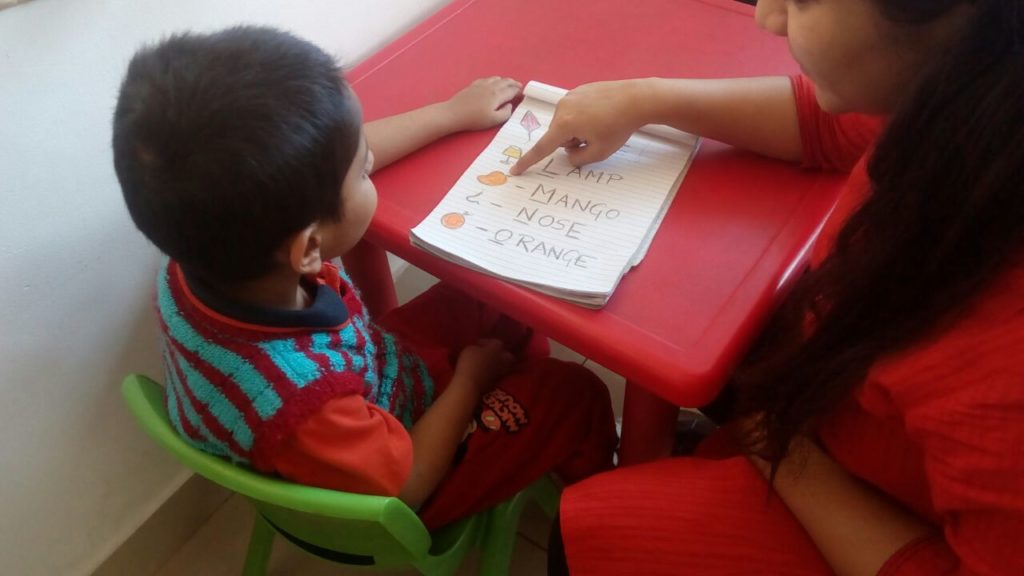
Pointing to a particular image as a gestural prompt to help the student understand that he is supposed to say what that image is
2 Full Physical Prompt
A full physical prompt is the most intrusive prompt wherein we provide physical contact to guide the student through the entire requested activity.
Example: We may ask a student to write the alphabets from A to Z and then provide hand-on-hand support and direction throughout the whole process.
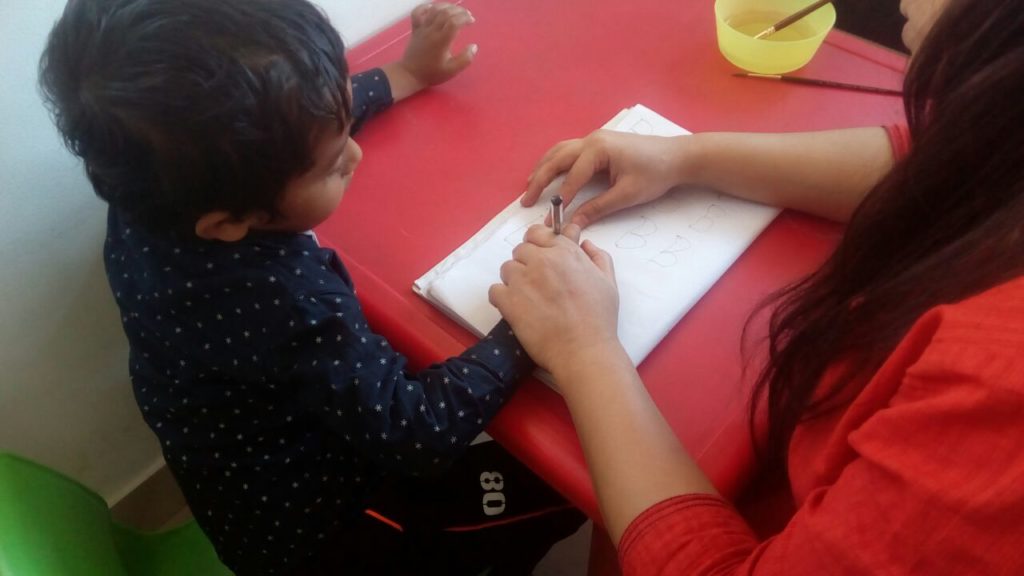
Full physical prompt used by holding the child’s hand and helping him write
3 Partial Physical Prompt
Here, we provide some assistance to guide the learner through part of the requested activity. Partial physical prompt can be gradually faded to just a slight touch on the shoulder or arm.
Example: We can ask a student to draw a square and gently touch or nudge their hand to hold the pencil and then provide a slight support on the elbow while he carries on the rest of the action.
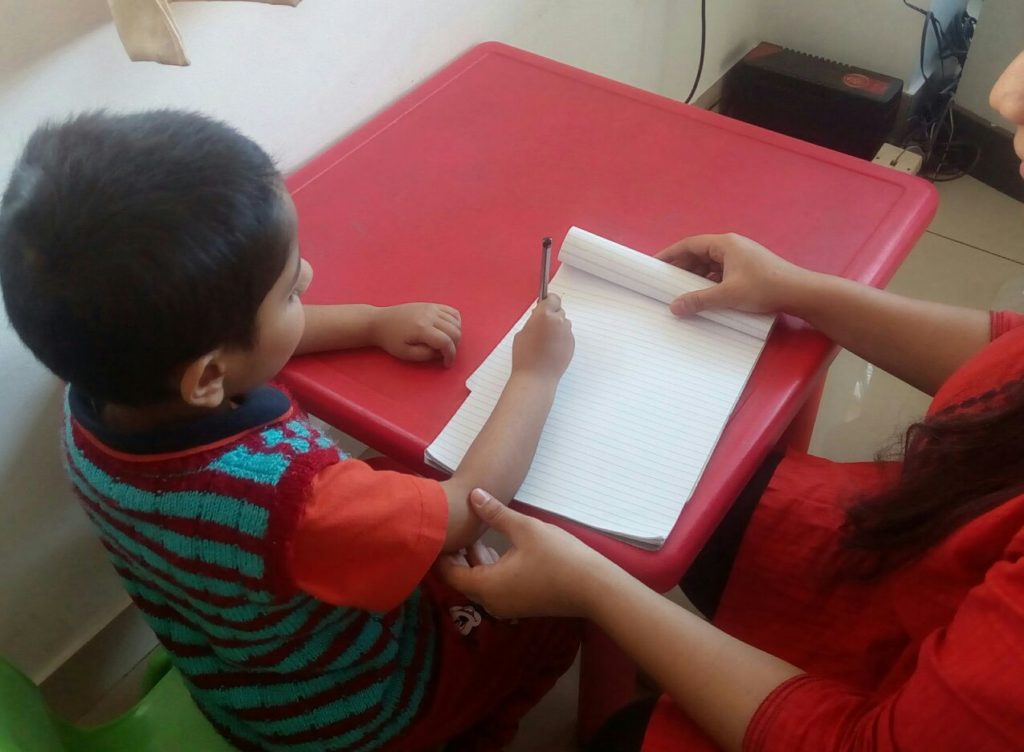
Partial physical prompt used by holding the child’s elbow and prompting him to make straight lines
4 Full Verbal Prompt
Full verbal prompt involves verbally providing the student with a complete and correct response to the question that we just asked them.
Example: If we ask a student “Who is the king of the jungle?” we can immediately respond by saying “Lion”.
5 Partial Verbal Prompt or phonetic prompt
When a student begins to get familiar with the correct response to a question, we only need to prompt them by verbally giving a part of the response or just the first phoneme/sound. Example: We can ask them “Who is the king of the jungle?” and prompt them by saying /l/ (phonetic sound of ‘L’).
6 Textual or written prompt
This can be provided in the way of a checklist or some other type of written instruction which guides the student through a list of activities or steps to complete a task.
Example: We can make a task schedule that lets the student know about the things he is supposed to do at a given time.
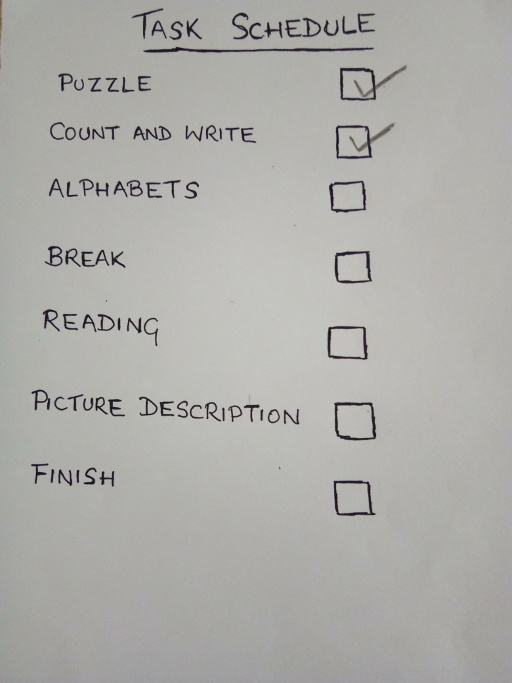
Textual prompt to help students understand the tasks that they have to complete
7 Visual Prompt
A visual prompt can include a video, photograph or drawing on a medium like paper, a whiteboard, or an electronic device.
Example: We use a visual schedule with pictures that guide the child through the process of snack-time, involving systematic actions like sit, open bag, take out the lunch-box and so on.

8. Auditory prompt
This can include any type of sound the student can hear, like an alarm or timer.
Example: We may tell the student, “Clean up your toys in 5 minutes.” and then prompt him by setting a timer to go off in 5 minutes.
9. Modeling prompt
Modeling prompts refer to an exact demonstration of the desired task in front of the child. Example: While singing a rhyme that involves actions, we can do the entire set of actions and ask the student to do it along with us.
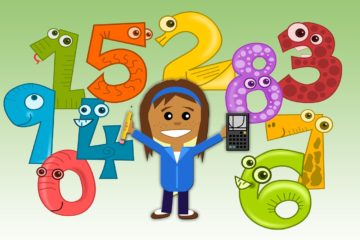


1 Comment
Dr. Muhammad Mushtaq Mangat · August 4, 2018 at 6:59 am
your article helped me a lot in writing a thesis about scaffolding techniques